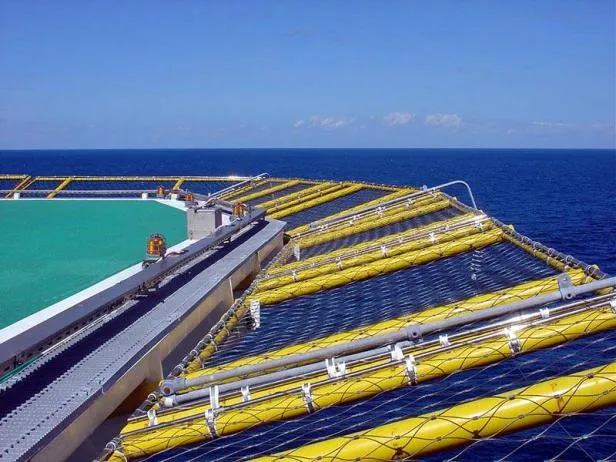- Industrial zone, South of Anping Town, Hengshui, Hebei, China.
- sales@hfpetromesh.com
- +86-18931809706
 Afrikaans
Afrikaans  Albanian
Albanian  Amharic
Amharic  Arabic
Arabic  Armenian
Armenian  Azerbaijani
Azerbaijani  Basque
Basque  Belarusian
Belarusian  Bengali
Bengali  Bosnian
Bosnian  Bulgarian
Bulgarian  Catalan
Catalan  Cebuano
Cebuano  Corsican
Corsican  Croatian
Croatian  Czech
Czech  Danish
Danish  Dutch
Dutch  English
English  Esperanto
Esperanto  Estonian
Estonian  Finnish
Finnish  French
French  Frisian
Frisian  Galician
Galician  Georgian
Georgian  German
German  Greek
Greek  Gujarati
Gujarati  Haitian Creole
Haitian Creole  hausa
hausa  hawaiian
hawaiian  Hebrew
Hebrew  Hindi
Hindi  Miao
Miao  Hungarian
Hungarian  Icelandic
Icelandic  igbo
igbo  Indonesian
Indonesian  irish
irish  Italian
Italian  Japanese
Japanese  Javanese
Javanese  Kannada
Kannada  kazakh
kazakh  Khmer
Khmer  Rwandese
Rwandese  Korean
Korean  Kurdish
Kurdish  Kyrgyz
Kyrgyz  Lao
Lao  Latin
Latin  Latvian
Latvian  Lithuanian
Lithuanian  Luxembourgish
Luxembourgish  Macedonian
Macedonian  Malgashi
Malgashi  Malay
Malay  Malayalam
Malayalam  Maltese
Maltese  Maori
Maori  Marathi
Marathi  Mongolian
Mongolian  Myanmar
Myanmar  Nepali
Nepali  Norwegian
Norwegian  Norwegian
Norwegian  Occitan
Occitan  Pashto
Pashto  Persian
Persian  Polish
Polish  Portuguese
Portuguese  Punjabi
Punjabi  Romanian
Romanian  Russian
Russian  Samoan
Samoan  Scottish Gaelic
Scottish Gaelic  Serbian
Serbian  Sesotho
Sesotho  Shona
Shona  Sindhi
Sindhi  Sinhala
Sinhala  Slovak
Slovak  Slovenian
Slovenian  Somali
Somali  Spanish
Spanish  Sundanese
Sundanese  Swahili
Swahili  Swedish
Swedish  Tagalog
Tagalog  Tajik
Tajik  Tamil
Tamil  Tatar
Tatar  Telugu
Telugu  Thai
Thai  Turkish
Turkish  Turkmen
Turkmen  Ukrainian
Ukrainian  Urdu
Urdu  Uighur
Uighur  Uzbek
Uzbek  Vietnamese
Vietnamese  Welsh
Welsh  Bantu
Bantu  Yiddish
Yiddish  Yoruba
Yoruba  Zulu
Zulu
- Afrikaans
- Albanian
- Amharic
- Arabic
- Armenian
- Azerbaijani
- Basque
- Belarusian
- Bengali
- Bosnian
- Bulgarian
- Catalan
- Cebuano
- Corsican
- Croatian
- Czech
- Danish
- Dutch
- English
- Esperanto
- Estonian
- Finnish
- French
- Frisian
- Galician
- Georgian
- German
- Greek
- Gujarati
- Haitian Creole
- hausa
- hawaiian
- Hebrew
- Hindi
- Miao
- Hungarian
- Icelandic
- igbo
- Indonesian
- irish
- Italian
- Japanese
- Javanese
- Kannada
- kazakh
- Khmer
- Rwandese
- Korean
- Kurdish
- Kyrgyz
- Lao
- Latin
- Latvian
- Lithuanian
- Luxembourgish
- Macedonian
- Malgashi
- Malay
- Malayalam
- Maltese
- Maori
- Marathi
- Mongolian
- Myanmar
- Nepali
- Norwegian
- Norwegian
- Occitan
- Pashto
- Persian
- Polish
- Portuguese
- Punjabi
- Romanian
- Russian
- Samoan
- Scottish Gaelic
- Serbian
- Sesotho
- Shona
- Sindhi
- Sinhala
- Slovak
- Slovenian
- Somali
- Spanish
- Sundanese
- Swahili
- Swedish
- Tagalog
- Tajik
- Tamil
- Tatar
- Telugu
- Thai
- Turkish
- Turkmen
- Ukrainian
- Urdu
- Uighur
- Uzbek
- Vietnamese
- Welsh
- Bantu
- Yiddish
- Yoruba
- Zulu
Designing Safety Barriers for Helicopter Landing Pads to Enhance Perimeter Protection and Security Measures
Enhancing Safety with Perimeter Netting for Helipads
The use of helipads, essential infrastructure serving the aviation and medical sectors, has significantly increased over the years. With this rise in usage, the necessity for robust safety measures surrounding these landing spots has never been more critical. One effective solution that has emerged is the implementation of perimeter safety netting.
Enhancing Safety with Perimeter Netting for Helipads
The benefits of perimeter safety netting extend beyond immediate impact prevention. First and foremost, it contributes to the overall operational safety of helicopter flight operations. The presence of netting lessens the likelihood of windblown debris or foreign objects interfering with critical operations. This not only protects the aircraft but also ensures the safety of passengers and crew members onboard. Additionally, perimeter netting can serve a dual purpose, acting as a barrier to keep wildlife and stray animals away from helipads, which can be another hazard during takeoff and landing.
helipads perimeter safety netting

Moreover, the installation of perimeter safety netting is in alignment with regulatory guidelines and industry best practices. Aviation regulatory bodies globally emphasize safety in operations, prompting helipad operators to adopt additional safety measures to mitigate risks. The use of perimeter netting can demonstrate compliance and a commitment to safety, potentially improving the standing of an operator within the industry and instilling confidence among users.
The types of materials used for perimeter safety netting are diverse, ranging from high-tensile strength synthetic fibers to metal netting designed to withstand harsh environmental conditions. The choice of material should consider factors such as the local climate, potential impacts from nearby activities, and the specific requirements of the helipad. An adequately installed and maintained netting system ensures longevity and effectiveness in protecting the helipad perimeter.
However, while perimeter netting offers substantial safety benefits, it is critical to remember that it should be part of a broader safety strategy. Regular inspections, maintenance, and training for personnel are necessary to ensure maximum effectiveness. Training can equip staff with the skills needed to recognize potential hazards and properly respond to emergencies, further reinforcing the importance of comprehensive safety protocols.
In conclusion, perimeter safety netting is an essential feature for modern helipads, combining practical safety with compliance to aviation regulations. By reducing the risk of foreign objects entering the operational zone and enhancing the overall safety profile of helipad operations, perimeter netting plays a significant role in safeguarding both human life and equipment. As the aviation sector continues to evolve, adopting such measures will remain an integral part of ensuring a secure and efficient operational environment. The ongoing commitment to safety, alongside advancements in technology and design, will shape a safer future for all aviation stakeholders.
-
Welded Steel Bar Grating: The Strongest Choice for Industrial FlooringNewsMay.21,2025
-
Steel Grating for Sale: The Ultimate Anti-Slip SolutionNewsMay.21,2025
-
Steel Frame Shaker Screens: Unmatched Durability for Demanding OperationsNewsMay.21,2025
-
Shaker Screens: Your Ultimate Solution for Oil & Gas FiltrationNewsMay.21,2025
-
Press Locked Steel Grating: The Smarter Choice for Heavy-Duty FlooringNewsMay.21,2025
-
Helicopter Deck Safety Nets: Protect Your Crew and EquipmentNewsMay.21,2025